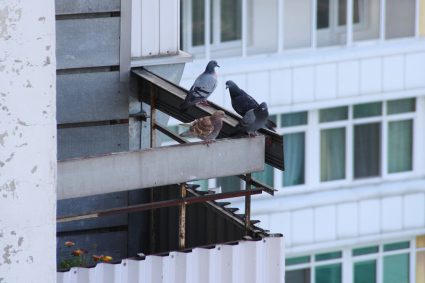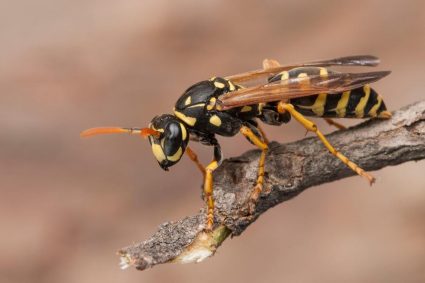
We had an eventful first year in our new home. The fact that it included a big yard meant that we finally had the space for our outdoor dream projects.
We had a fantastic time working on those projects, the most recent being creating and maintaining a lovely lawn.
We loved how it came out. Located between the patio and our home garden, it tied the entire yard together. We often relaxed on our deck while looking over our lush lawn.
So, waking up to a lawn with little holes was not a pleasant surprise.
We initially had no clue about the culprits responsible for the mess and the odds of them returning to cause more damage. However, upon making a few calls to a few friends, we learned that raccoons were the likeliest vandals.
It was time to take control of the situation and save our beautiful lawn from being taken apart, and the first step toward finding solutions was to confirm that raccoons were behind the mess and understand why raccoons dug holes in lawns and yards.
Raccoon holes result from their efforts in search of food, primarily grubs, abundantly found underneath the moist ground. However, they sometimes dig holes to create dens to find shelter from cold weather if they fail to find better hiding spots.
Let’s walk through the findings of my research on raccoons, how to identify holes dug by raccoons, and why raccoons dig holes in lawns and yards.
What Animals Dig Holes in Yards and Lawns?

Although most of our friends suspected that raccoons were responsible for making our lawn look like a minefield, our research revealed several possibilities. As a result, we had to be sure that raccoons were to be blamed before taking measures to prevent a repeat hole-digging spree.
Animals such as rats, armadillos, moles, skunks, and woodchucks also dig holes, although their much bigger rivals, raccoons, get the most recognition.
Raccoons are notorious for destroying lawns and yards by digging hundreds of shallow holes, sometimes ripping out patches of sod or turf.
They can also move into secluded parts of houses, using even the smallest of openings, and cause expensive damages over time.
- Raccoons are cute-looking animals. Unfortunately, the havoc they cause does not bring much joy to homeowners. A mature raccoon is about 70 inches long and weighs up to 35 pounds. They are grey and have dense coats to protect them from cold weather.
- Raccoons are easy to identify thanks to their unique facial-mask patterns and ringed tails.
- Raccoons are very intelligent, so dealing with them can be a thorough understanding of their interests and patience. In addition, they have a long memory, remembering solutions for challenges for up to three years.
- Raccoons move into urban areas mainly due to habitat loss and food shortages due to environmental changes.
- They are considered a pest for many reasons. When raccoons move into homes, they can do much damage, much costlier than a yard full of holes. Additionally, raccoons are known to transmit diseases such as rabies.
How To Identify Raccoon Holes
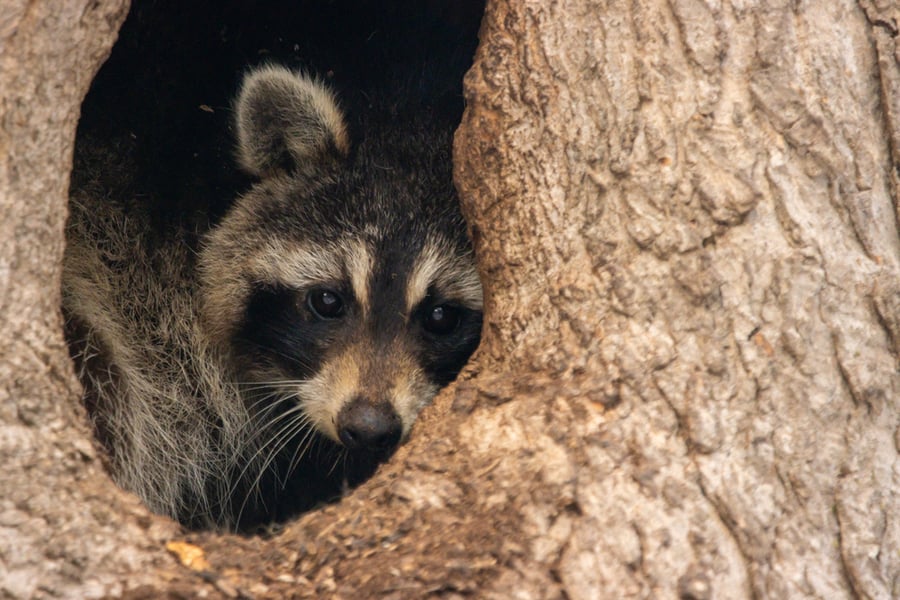
Raccoon holes are usually cone-shaped, narrow, and notoriously messy. Since they typically do not dig to create cozy burrows or dens, these holes don’t extend too deep into the ground. Instead, raccoons take a lazy approach to digging by flipping the earth around, resulting in whole sections of turf being tossed around at times.
When it comes to their burrows or dens, raccoons choose to do less work whenever possible. They either claim abandoned burrows of other animals or move into fallen or hollowed-out tree trunks or logs.
Since they don’t intend to live in the holes they dig in yards, they spend as little energy on them as possible, resulting in messy outcomes.
Why Raccoons Dig Holes
Raccoons dig holes for various reasons resulting in property damage amounting to millions across the United States. In addition, many homeowners have had trouble with raccoons digging in their yards, resulting in stress and costs to repair lawns, garden structures, and even houses.
Therefore, I made it a point to understand the motives behind raccoons digging holes and doing everything I could to stop them. Restoring our damaged lawn didn’t require much money or effort.
However, I didn’t want them to start frequenting our yard and venture into our patio or, even worse, our house. So here is what I found out about why raccoons dig holes.
1. Searching for Food

Raccoons mostly dig holes in search of food. They prey on various insects, with grubs, the larvae of various types of beetles, being their favorite food.
They smell grubs thanks to their sensitive noses and use their nimble front paws to dig and catch grubs and other insects.
Since they have little interest in digging holes to live in them, they don’t care about their size or shape. Instead, their primary focus is getting to the food without spending too much energy. Unfortunately, this approach usually results in them ripping apart the ground.
European Chaffer beetle is a common species of grubs that attract raccoons to lawns. It has a one-year lifespan and multiplies rapidly, offering plenty of food for raccoons and other burrowing pests.
Raccoons are brilliant animals and will eat almost anything to survive, especially when they can’t find their preferred snacks under the grass.
They are more likely to dig holes following some rain when the moisture attracts grubs and insects closer to the ground’s surface. As a result, most lawn damages caused by raccoons occur during late summer and early fall.
Water Gardens
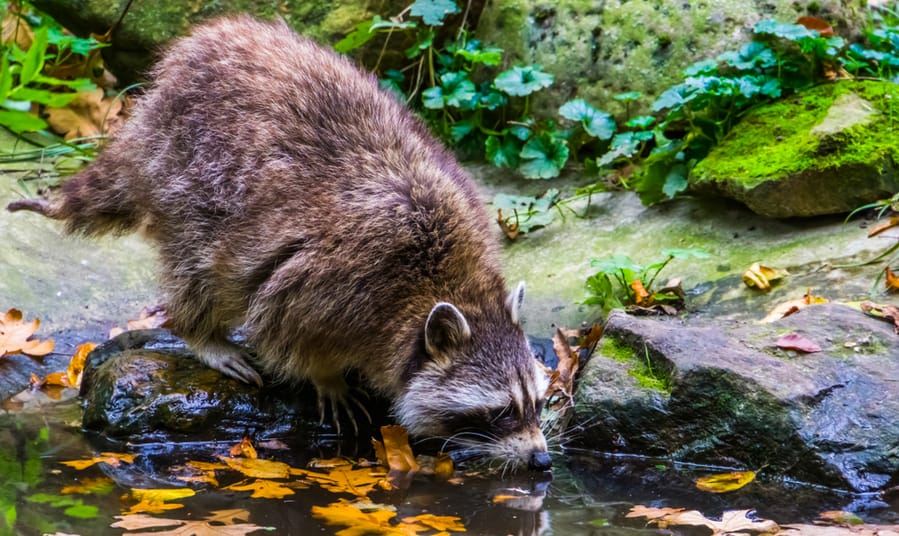
The natural habitats of raccoons are usually located nearby water sources since the presence of water and moisture enables them to find their favorite foods, including grubs, insects, and aquatic animals.
Water gardens in urban areas can attract raccoons searching for fish, frogs, frog eggs, snails, and water plants. Unfortunately, the moist ground surrounding water gardens also contains grubs that raccoons can’t get enough of.
Home Gardens
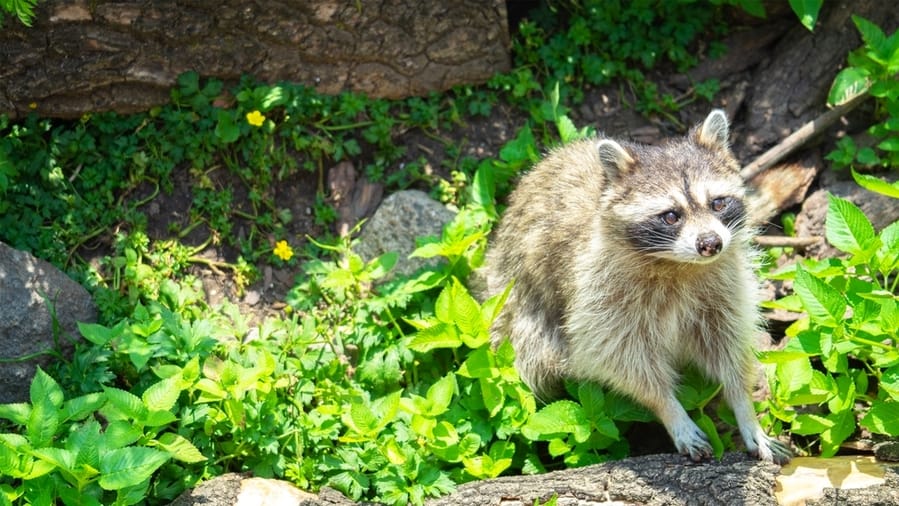
Being omnivores, raccoons also wander into yards in search of food other than insects. Homegrown vegetables and fruits are easy targets for them. Raccoons especially like fresh crops such as corn, peas, rhubarb, potatoes, grapes, pears, apples, plums, and peaches.
Pet food is also known to attract raccoons to households.
2. Making Dens
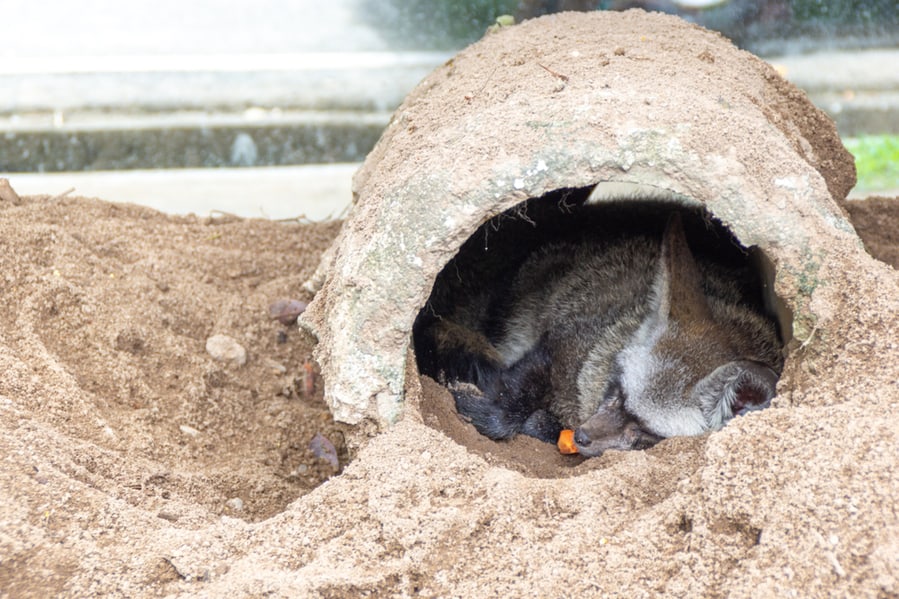
Raccoons take a lazy approach to finding shelter whenever they can. As a result, they usually survive the cold months in dens located in abandoned burrows, hollow trees, piles of brush or cattail, haystacks, barns, rock crevices, abandoned buildings, or secluded areas of houses.
However, if they don’t locate such a shelter, they will try to dig and burrow underground to survive the winter months. Therefore, raccoons can sometimes dig holes in yards intending to create dens.
Raccoons prefer to take refuge in areas where they frequently find food, usually switching between multiple shelters.
The difference between holes that they dig for food and those they dig for shelter is that they like to camouflage the entrance to their burrow with scattered grass and sod.
Raccoon caves are much smaller than most homeowners anticipate, between three to ten inches wide.
Conclusion
As shocking as it was to find our lawn full of messy holes one morning, we soon confirmed that raccoons were the likeliest culprits, judging by the characteristics of the holes and the overall untidiness of the job. So then we researched what makes raccoons dig holes in lawns and yards.
Our research revealed that raccoons mostly dig the moist ground in search of food, especially grubs, one of their favorite snacks. They also dig holes for shelter if they can’t find their preferred options.
Ground moisture usually means food for raccoons, so they are known to frequent areas near water sources, including water features in yards.
We were glad that we took the time to understand the root causes of the problem we were dealing with. That knowledge later helped us make our garden less attractive for raccoons and prevent them from digging up our lawn or yard again.
Frequently Asked Questions
Do Raccoons Live in Holes in the Ground?
Raccoons generally prefer to take shelter in hollow trees, fallen tree trunks, abandoned burrows, brush piles, haystacks, abandoned buildings, or parts of homes such as foundations, attics, and open areas underneath decks and porches.
However, they will burrow underground where it is warm if they fail to find a better shelter.
How Big of a Hole Can a Raccoon Go Through?
Raccoons only need three to four inches to go through a hole. As a result, they are very good at squeezing into tight spaces, and as a result, their burrows or dens are narrower and more discrete than most people expect.
What Draws Raccoons to Your Yard?
A yard may seem like an attractive area for foraging raccoons due to the presence of grubs, insects, aquatic animals, vegetables and fruits, pet food, or almost anything they consider food.





